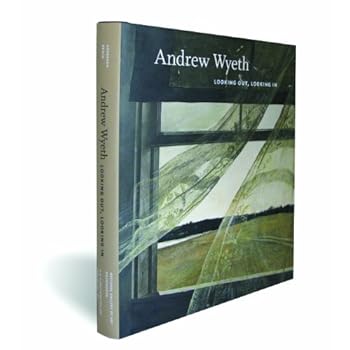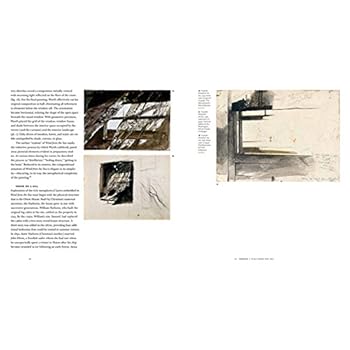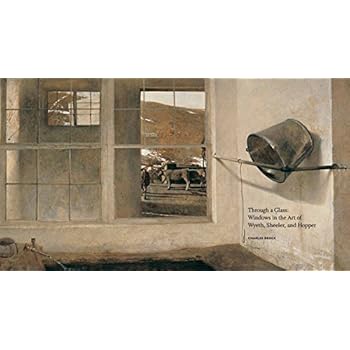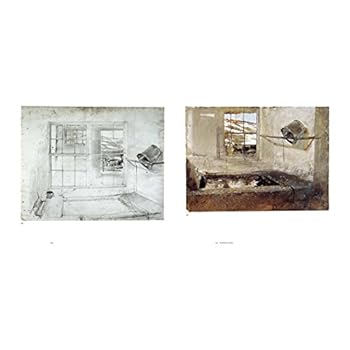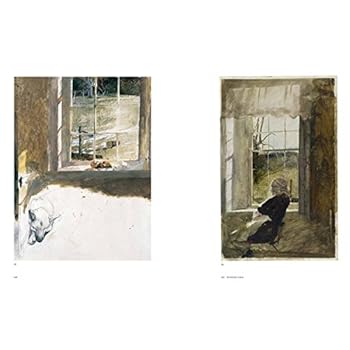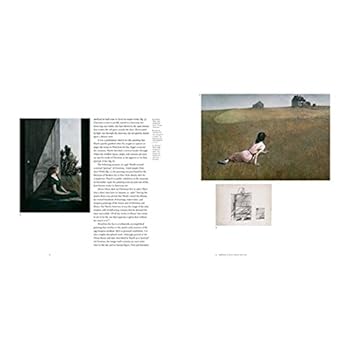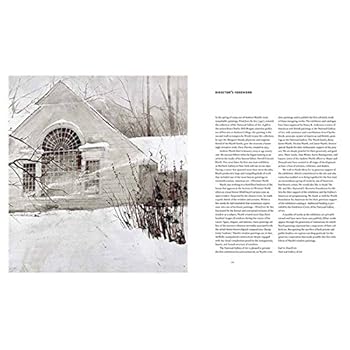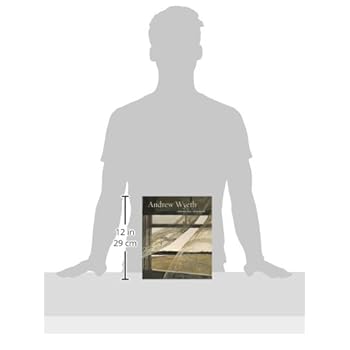Andrew Wyeth: Looking Out, Looking In
Category: Books,Arts & Photography,Individual Artists
Andrew Wyeth: Looking Out, Looking In Details
Review This catalogue for a National Gallery of Art exhibition uses Wind from the Sea (l947, tempera on hardboard), showing a window with a blowing curtain, as exemplifying a major theme of Wyeth's. The window depicted is in the second story of the house where Wyeth had a studio (the house depicted in his famous Christina's World ). This reassessment of Wyeth's achievement features an introduction by curators Anderson and Brock (both, National Gallery) on windows as subject matter in Wyeth's paintings. They found some 300 window images in Wyeth's oeuvre. In the first essay "Wind from the Sea: Painting Truth beneath the Facts," Anderson looks at the creation and provenance of the painting from Wyeth's easel to the National Gallery in 2009, and its relationships to poetry of Robert Frost. Brock's essay, "Through a Glass: The Window in the Art of Andrew Wyeth, Charles Sheeler, and Edward Hopper," compares Wyeth with these other leaders of American realism, using windows as a theme. Also discussed is the role of women in their work. This intriguing catalogue is significant for the seriousness and depth of its insights (often lacking in Wyeth commentary). It includes beautiful color plates and a 60-item exhibition checklist. Summing Up: Recommended. Lower-level undergraduates and above; general readers. (W.L. K Whitwell CHOICE)ANDREW WYETH: LOOKING OUT, LOOKING IN by Nancy Anderson and Charles Brock, assembles sixty splendidly reproduced Wyeth paintings and watercolors that employ windows as motifs. Favoring stripped-down winter landscapes and nearly empty interiors, Wyeth savored windows' ability to isolate nearly abstract forms outdoors or to transform an interior with a play of shadow-in fact, he declared himself an 'abstract painter.' But he employs light like a poet, particularly in the book's opening series of spreads, an overture of full-bleed details with metaphoric resonance, which announce Wyeth's visual themes: reflection, illumination, luminosity, shadows and patterns. (Christopher Lyon Bookforum)The works share a theme that has interested artists for centuries: windows. Wyeth's approach to that subject is as distinctive as it is haunting. (Tim Smith The Baltimore Sun)The absorbing new Wyeth exhibition, “Andrew Wyeth: Looking Out, Looking In,” is in certain respects the opposite of the Helga show, even something of an exorcism of it. Where the Helga show was dominated by a single human figure, the current exhibition is entirely without people, except for a couple of preparatory sketches... Instead of such cacophonous material, the current show is built around a single, quiet motif in many variations: the window. The result of the carefully concieved installation, in which preparatory studies are grounded around more finished and often drastically simplified paintings, is an increasingly immersive experience, an aesthetic revelation rather than prurient one. The catalog essays, by National Gallery curators Nancy Anderson (on Wyeth's working process) and Charles Brock (comparing Wyeth's windows to two influences, Edward Hopper and the Pennsylvania precisionist Charles Sheeler), are understanded, inquisitive, and well written... (Christopher Benfey The New York Review of Books)"Andrew Wyeth: Looking Out, Looking In" comprises 60 beautifully displayed works featuring windows. All were painted during four decades (1947-88) around Wyeth's home in Chadds Ford, Pa., and Cushing, Maine, where the artist summered. In both places he befriended neighbors and painted portraits of them and their dwellings. (Bruce Cole The Wall Street Journal)Andrew Wyeth's Olson House, 1939, from Andrew Wyeth:Looking Out, Looking In (National Gallery of Art, Washington, D.C), By Nancy K. Anderson and Charles Brock. (Schappell Elissa Vanity Fair) Read more

Reviews
This is exhibition catalog (mounted by the National Gallery of Art, in Washington D.C.) has many fine images in it. However, it is mainly centered on one subject: the many pictures created by A. Wyeth that contain windows or doors. This is okay, as far as it goes, especially since that is the focus of this exhibit. But there were many other subjects painted in the chronological sequence of his work, from which these window pictures were plucked, disembodied from the other pictures created around the same time as these. I would have preferred that at least some of the images of other major works in the same chronological sequence as the works featured here, were included (even if only in thumbnail format) to provide a context for how and when this images were created an how they relate to the whole.An interesting extended, not cursory, discussion of the works is included, with several essays written by Nancy K. Anderson and Charles Brock. Production value of the images is top notch and includes many details as well as the full sized images. Part of the essays include a comparison of how Wyeth's treatment of windows relates to his contemporaries Charles Sheeler and Edward Hopper on the same subject, and how in turn they and their work were all influenced by World Wars I and II and the Great Depression.

